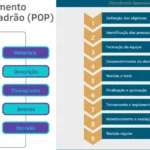With the rise in economic instability, many individuals are struggling to cope with the burden of tax debt. Unpaid taxes can result in penalties, interest, and severe financial consequences. Understanding how to manage and pay off tax debt effectively is crucial for maintaining financial health and achieving peace of mind. In this article, we will explore several strategies that can help mitigate tax obligations and provide relief to those struggling with debt.
Understanding Tax Debt and Its Impact on Personal Finances
Tax debt occurs when a taxpayer fails to pay their dues to the Internal Revenue Service (IRS) by the designated deadline. This can result in additional charges, including penalties and interest, which can cause the debt to grow over time. Ignoring tax liabilities can have detrimental effects on one’s credit score, the ability to obtain loans, and could even result in legal action. For those assessing their potential for tax debt forgiveness, utilizing a debt forgiveness tax calculator can be an invaluable tool. This calculator helps estimate how specific IRS programs might reduce one’s tax liabilities based on individual financial data.
Taxpayers must understand that the IRS categorizes tax debt differently from consumer debt. Tax agencies have broad collection powers and can pursue actions like wage garnishments and property liens. As a result, tax debt can be more disruptive to personal finances than other types of debt.
People often experience feelings of stress and anxiety due to tax debt, which can affect their overall well-being. Finding a manageable solution to these liabilities can alleviate emotional distress and provide a more straightforward path to financial freedom. Proactive communication with the IRS is also key to resolving tax issues effectively.
Navigating IRS Payment Plans for Tax Debt Relief

One viable option for those unable to pay their tax debt in full is an IRS payment plan. These plans, also known as installment agreements, enable taxpayers to repay their debt in smaller, more manageable increments over time. It’s essential for individuals to understand that various payment plans are available, each tailored to different financial circumstances.
To qualify for an installment agreement, taxpayers must file all required tax returns and provide the IRS with accurate financial information. Once an agreement is in place, it’s crucial to adhere to the payment schedule to avoid defaulting on the plan, which could lead to additional penalties.
The IRS offers short-term payment plans for debts under a certain amount and long-term payment plans for larger amounts or for those who need more time to pay. While payment plans provide relief, it’s essential to be aware that interest and penalties will continue to accrue until the total debt is paid off.
For taxpayers uncertain about their ability to manage the installment process independently, consulting a tax professional can offer guidance. Specialists can assist in negotiating terms with the IRS and ensure that payments are both timely and feasible within an individual’s budget.
The Role of Offer in Compromise in Settling Tax Debts
An Offer in Compromise (OIC) is an option for taxpayers unable to pay their full tax debt due to financial hardship. It allows individuals to settle their tax liabilities for less than the total owed, but it requires substantial documentation to prove inability to pay. The IRS reviews OICs on a case-by-case basis, taking into account factors such as income and expenses.
While an accepted OIC can significantly reduce tax debt, approval isn’t guaranteed, and success rates vary. It’s advisable to work with a tax professional for the best chance of success.
Once accepted, taxpayers must adhere to all terms and remain compliant with filing and payment requirements for five years to avoid default and reinstatement of the original debt.
Exploring Tax Debt Forgiveness and Eligibility Criteria

Tax debt forgiveness programs aim to help taxpayers unable to pay their dues due to extreme circumstances. They can partially or entirely relieve the taxpayer’s liability, but obtaining forgiveness is often complicated and requires proving economic hardship.
One initiative for federal tax forgiveness is the ‘Currently Not Collectible’ status, which pauses collections for taxpayers whose expenses exceed their income. While this status temporarily halts IRS collection efforts, it does not eliminate the debt, and interest and penalties may still accrue.
Navigating the eligibility criteria for these programs can be daunting, so consulting with tax professionals is essential to identify and maximize available relief options.
Addressing tax debt proactively and exploring the various relief strategies can lead to significant financial benefits and reduced stress. By understanding available options and, when necessary, seeking the aid of a tax debt relief expert, taxpayers can navigate the complexities of resolving tax liabilities and move towards a more secure financial future.






